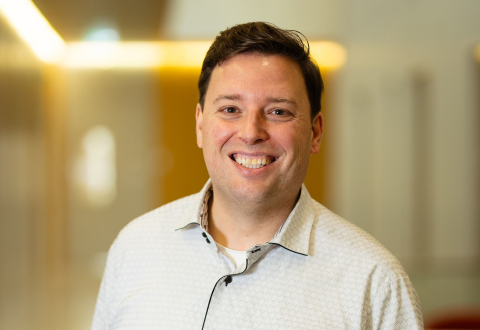A new energy record has been announced by EUROfusion and research institutes involved. What does this record mean? What’s the role of DIFFER? And what do ice cold pellets have to do with fusion reactors and these experiments? DIFFER researcher Matthijs van Berkel explains.
Matthijs van Berkel is group lead of the ‘Energy Systems and Control’ group. This group focuses on the dynamical modelling of fusion reactors or different aspects of it. At the same time we use this information to develop and apply feedback control and thereby improve the processes within a fusion reactor to make it safe but also to optimize the performance.
A new energy record: what does this mean?
In general it shows that fusion is really progressing and that again we are able to set a new record. I expect that in the coming years we will see many of these records coming up. Not from JET, but from possibly the new start-ups and later ITER.

What’s DIFFER's role when it comes to the experiments at JET?
DIFFER has been involved in the experiments within the European context. Europe has a fusion programme in which they invite researchers to perform experiments such as at JET. We - myself and my colleagues Thomas Bosman and Lennard Ceelen - were particularly involved in two experiments: the exhaust control and the deuterium-tritium ratio control, in other words the fuel mixture control. Our main contribution in the JET experiments was the exhaust control. EUROfusion also regards that as one of the highlights of the past campaign.
In a fusion reactor we burn hydrogen and we produce helium. At the same time, materials from the wall can end up in the core of the fusion reactor. We need to get these out in a safe way. That’s why we create an exhaust. However, the wall can become very hot due to the exhaust. We need to safely cool the plasma (hot gas) down before it reaches the wall, but in a regulated manner. Too much cooling would reduce the fusion power production. This cooling can be regulated by injecting regular gas and noble gasses such as Argon.
What do ice-cold hydrogen pellets have to do with fusion reactors?
In our experiments we particularly looked at the injection of frozen hydrogen pellets, that was our focus for the fuel control. Why do we freeze the fuel? It sounds contraintuitive, but if the pellets are cold enough they fly deeper into the core of the fusion reactor and hence fuel better. As you can imagine the plasma is extremely hot. So to get hydrogen fuel inside the plasma you need to make it solid and then shoot them in, so that it goes in far enough. We did a number of experiments at JET, we need to still look in detail to the results of what these experiments produced. We hope to see some exciting outcomes.
What did you and your team learn specifically at JET?
I think we learned three important things. First of all we demonstrated that the approach that we tested on smaller fusion devices in the past is valid for a large reactor as JET. And showed actually that we are able to regulate the exhaust. Of course, we did that with a large team of colleague scientists. Secondly we really experimented with pellets to see what the effect is. And now, as I said, the outcomes still have to come. And the third thing, which is also very interesting, is that experiments don’t always go as you want. So an approach that we thought would be valid for DEMO to regulate the exhaust, showed some problems and we now want to analyse these problems to see which steps we need to take to improve this.
Now JET closes, what are the next steps of you and your team?
Many experiments are still planned. For example, in the largest fusion reactor in the US, the DIII-D tokamak. And also in the largest fusion reactor in Europe operating now; ASDEX Upgrade, where we are going to look in more detail to the exhaust and pellet injection. Moreover, I myself am a member of the design team of DEMO, the first fusion reactor that Europe tries to set up really to go on to the grid. And we have to develop a full exhaust strategy that makes sure that we can safely operate these future fusion reactors.
Questions or comments? Contact Matthijs van Berkel at m [368] vanberkel [28] differ [368] nl (m[dot]vanberkel[at]differ[dot]nl).
Author: Rianne van Hoek
Go to the News page.